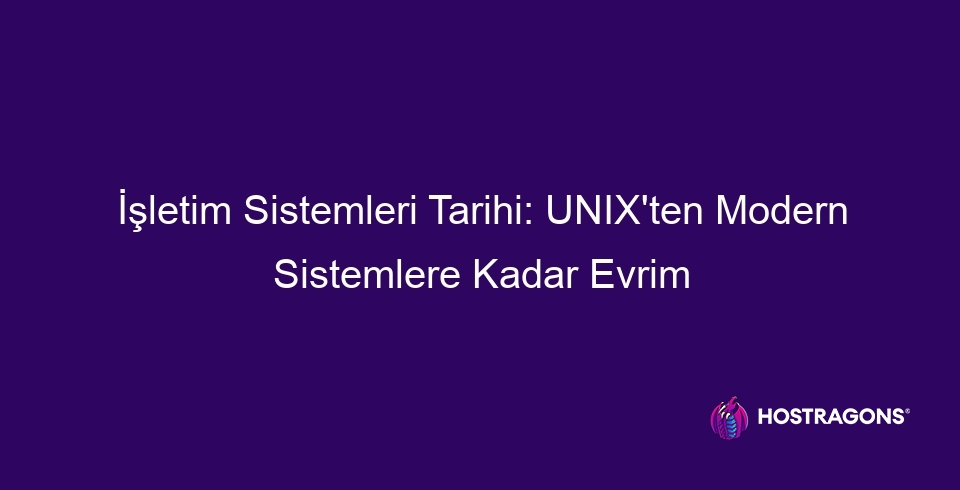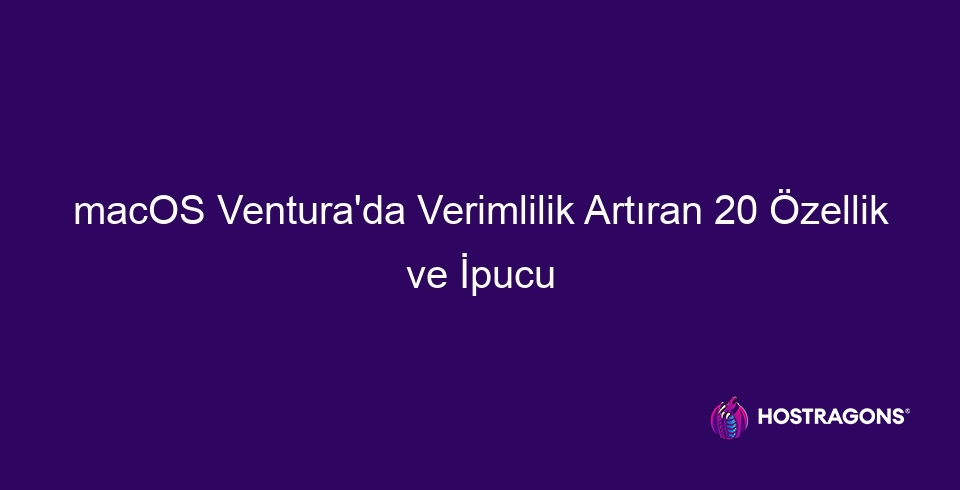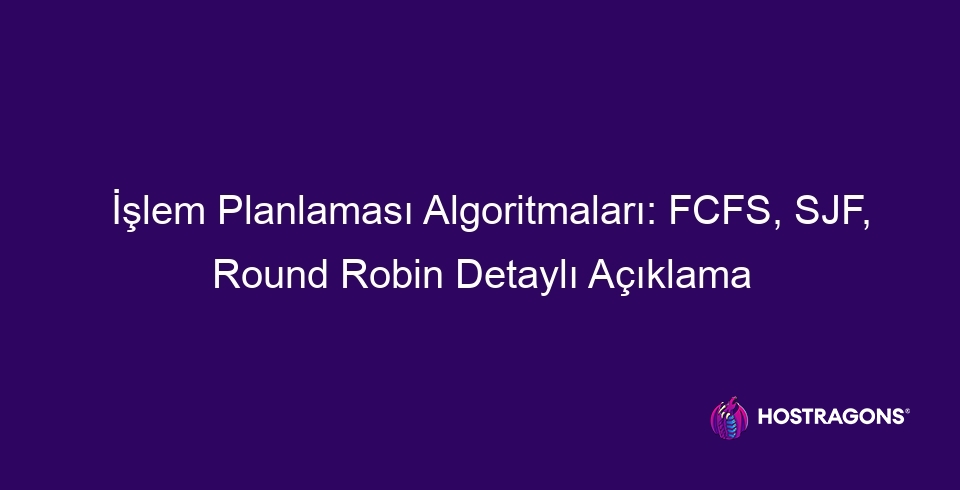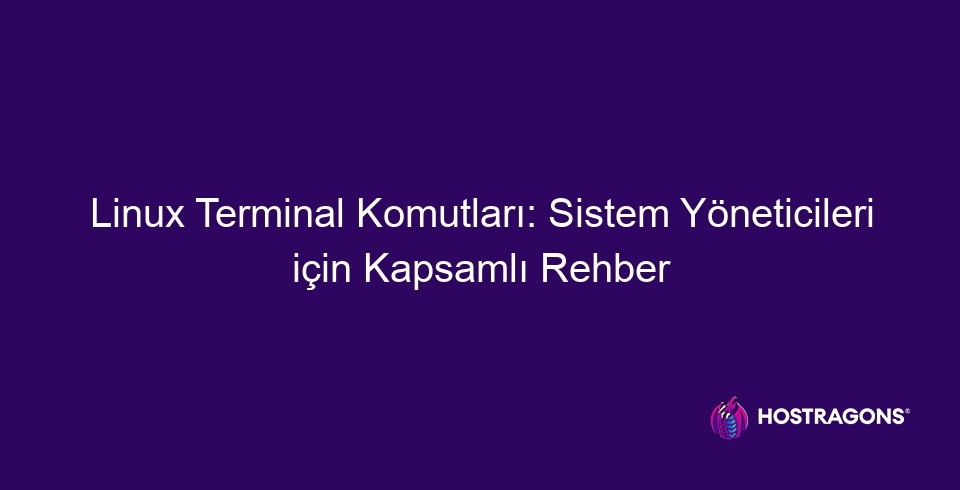Free 1-Year Domain Offer with WordPress GO Service
This category contains information about various operating systems used on web servers and personal computers. It contains detailed content about the features, installations, updates and optimizations of popular operating systems such as Windows, Linux, macOS.

History of Operating Systems: Evolution from UNIX to Modern Systems
Operating Systems are the fundamental software that enables communication between a computer's hardware and the user. This blog post examines in detail the evolution of Operating Systems from UNIX to the present day. It covers a wide range of topics, from the historical development of UNIX to the different types and features of Operating Systems. It analyzes the fundamental components of modern Operating Systems, considerations when choosing a system, and the differences between them. It also evaluates innovations in next-generation Operating Systems, the importance of updates, and their advantages and disadvantages. Finally, important information is presented and recommendations are made for choosing the right Operating System. What are Operating Systems? Basic Definitions and Concepts Operating systems are the fundamental software that enables communication between a computer's hardware and the user. A computer's...
Continue reading

Operating System Architectures: Monolithic, Microkernel, and Hybrid Architectures
This blog post examines various operating system architectures in detail. The key differences and advantages between monolithic, microkernel, and hybrid architectures are discussed. The single-kernel architecture of monolithic systems, the modular approach of microkernels, and the features of hybrid systems that combine these two architectures are explained. The performance comparison of these architectures is also presented, highlighting methods for improving the performance of monolithic systems and the microkernel development process. The post also evaluates the future of hybrid architectures, current trends, and innovations in operating systems. Finally, it provides readers with a comprehensive overview of operating system architectures. Introduction to Operating System Architectures An operating system (OS) is the fundamental software that manages the interaction between a computer system's hardware and its users.
Continue reading

20 Productivity-Boosting Features and Tips in macOS Ventura
Everything you need to know to boost productivity in macOS Ventura is in this blog post! You'll find plenty of tips in macOS Ventura, from notable innovations to features that will enhance your user experience. The information covers a wide range of topics, from the benefits of screen sharing and quick access features to how to save time with shortcuts and productivity-boosting apps. It also touches on the privacy and security improvements in macOS Ventura, offering practical tips for making the most of them. By reading this post, you can maximize your work performance in macOS Ventura. Productivity-Boosting Strategies in macOS Ventura There are a variety of strategies to boost productivity, optimize your workflow, and save time in macOS Ventura. These strategies range from system settings...
Continue reading

Memory Management in Operating Systems: Virtual Memory, Paging, and Segmentation
Memory management in operating systems is a critical process that directly impacts system performance. In this blog post, we examine what memory management is in operating systems, why it's gaining importance, and its fundamental techniques. We cover in detail how methods like virtual memory, paging, and segmentation work, their advantages, and their differences. We also touch on practical applications of virtual memory and paging, common memory management challenges, and tips for professional memory management. Finally, we offer an overview of the future of memory management and its developments. A comprehensive guide to help you optimize system performance with effective memory management strategies in operating systems. What is Memory Management in Operating Systems? In operating systems...
Continue reading

Transaction Scheduling Algorithms: FCFS, SJF, Round Robin Detailed Explanation
Process scheduling is a critical element that directly impacts the efficiency of computer systems. This blog post examines the process scheduling algorithms FCFS (First Come, First Served), SJF (Shortest Job First), and Round Robin in detail. Starting with the question of why process scheduling is important, it discusses the operating principles, advantages, and disadvantages of each algorithm. Which algorithm to choose and when is evaluated based on performance analysis and best practices. Considerations for selecting the right process scheduling method are highlighted, and tips for optimizing system performance are offered. This guide aims to provide a comprehensive understanding of process scheduling. Why is Process Scheduling Important? Process scheduling is the process of an operating system or resource management system...
Continue reading

Best Server Operating Systems for Web Servers
This blog post examines the most suitable operating systems for web servers in detail. It begins by explaining what web servers are and why they're important, then compares the advantages and disadvantages of Windows Server and Linux servers. It addresses critical topics such as performance optimization, security measures, recommended software, backup strategies, and processor selection. The goal is to help readers make an informed decision by providing key considerations when choosing a web server. What Are Web Servers and Why Are They Important? Web servers form the foundation of websites and applications on the internet. Simply put, a web server processes web pages, images, videos, and other content that users (clients) request through their browsers.
Continue reading

File Systems Comparison: NTFS, ext4, APFS and ZFS
This blog post compares the different file systems NTFS, ext4, APFS, and ZFS, examining in detail the key features, advantages, and uses of each. It covers what file systems are, their basic concepts, the advantages of NTFS, the performance of ext4, the innovative features of APFS, and the high-capacity architecture of ZFS. The key differences between file systems are highlighted, and the importance of file systems for data security and selection is emphasized. This post, which also includes expert opinions, guides readers in determining the file system best suited to their needs. What Are File Systems? Basic Concepts File systems explain how data is organized, stored, and accessed on a storage device...
Continue reading

Multi-Core Processor Optimization in Operating Systems
This blog post examines in detail what multi-core processor optimization is and why it's important in operating systems. It covers a wide range of topics, from the operating principles of multi-core processors to how they are managed by operating systems. The necessary tools and software for optimization are introduced, and performance improvement methods are explained step-by-step. Performance comparisons across different operating systems and successful optimization examples are presented, highlighting key points to consider during the optimization process. Ultimately, a comprehensive guide is presented on how to achieve successful results with multi-core processor optimization in operating systems. What is Multi-Core Processor Optimization in Operating Systems? Multi-core processor optimization is the process of optimizing an operating system's multi-core...
Continue reading

Linux Terminal Commands: The Complete Guide for System Administrators
This comprehensive blog post provides a detailed guide for system administrators on using the Linux Terminal. It explains what the Linux Terminal is and why it's important, detailing the steps to getting started. It covers everything from basic commands to advanced features, from debugging to security measures. It also provides tips for efficient terminal use, common mistakes and solutions, and recommendations for success. This guide aims to provide the necessary information to enhance your Linux Terminal proficiency and perform your system administration tasks more effectively. What is the Linux Terminal and Why Is It Important? The Linux Terminal is a powerful tool used as a command-line interface (CLI) in Linux operating systems.
Continue reading

Operating System Security: Kernel Protections and Security Mechanisms
Operating system security is the cornerstone of modern computing infrastructure. This blog post examines the critical elements of operating system security, the roles of kernel protections, and various security mechanisms. It highlights the fundamental features of security protocols and common pitfalls, while solutions to kernel vulnerabilities are presented. Practical tips for improving operating system security are offered, focusing on developing an effective security strategy, data protection methods, and administrative measures. Finally, practical operating system security recommendations are presented to protect against cyber threats. Key Elements of Operating System Security: With the rapid increase in digitalization today, operating system security is becoming increasingly critical. Operating systems form the foundation of computer systems...
Continue reading

